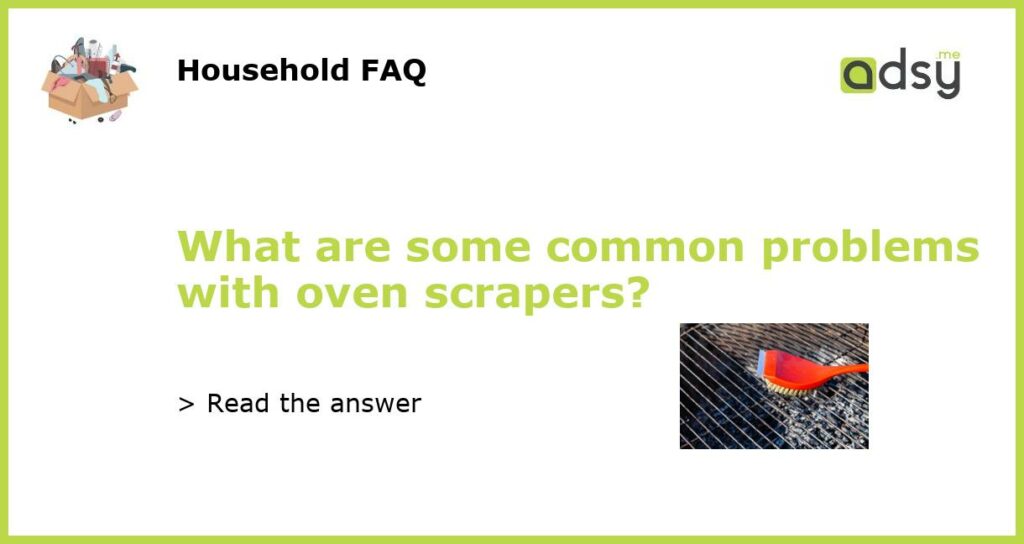All About Oven Scrapers: Common Problems and How to Fix Them
Dull Blades
Oven scrapers are designed to remove stubborn, baked-on residue from oven walls and racks. However, one common problem with oven scrapers is that the blades can become dull over time. This can make it difficult to effectively remove the residue, resulting in a longer cleaning process and potentially damaging the surfaces of your oven.
To fix this problem, consider sharpening the blades of your oven scraper. This can be done by using a sharpening stone or file to restore the sharpness of the blade. Alternatively, you can also replace the blade altogether by purchasing a replacement blade for your oven scraper model.
Ineffective Cleaning
Another common problem with oven scrapers is that they may not effectively clean all types of residue. Certain foods, such as sugary or greasy substances, can be particularly stubborn and require more than just scraping to remove.
To address this issue, try using a cleaning solution or oven cleaner in combination with your oven scraper. Applying the cleaner to the residue and allowing it to soak for a few minutes can help loosen the stubborn residue, making it easier to remove with the scraper.
Handle Breakage
The handle of an oven scraper is subjected to a fair amount of force during use, and this can lead to handle breakage. This is especially true if the handle is made of a low-quality material or if it has been weakened over time.
If your oven scraper’s handle breaks, you can try to repair it by using strong adhesive or epoxy. However, this may only be a temporary solution and might not provide a secure grip for long-term use. Consider investing in a higher-quality oven scraper with a sturdy handle to avoid this problem in the future.
Difficulty in Reaching Tight Spaces
One limitation of oven scrapers is that they may not be able to reach certain tight spaces, such as corners or crevices in the oven. This can leave behind some residue and make it challenging to achieve a thorough cleaning.
A possible solution is to use smaller, specialized scraping tools or brushes designed specifically for reaching these tight spots. These tools often have angled or slim profiles that can fit into narrow spaces more effectively.
Risk of Scratching Surfaces
When using an oven scraper, there is a risk of scratching the surfaces of your oven if not used properly. This can occur when excessive force is applied or if the scraper comes into contact with delicate materials, such as glass.
To minimize the risk of scratching, always use gentle pressure when scraping and be mindful of the type of materials your oven scraper comes into contact with. If your oven has a glass door or delicate interior, consider using a scraper specifically designed for these surfaces, such as a non-abrasive scraper or a scraper with a protective coating.
In conclusion, oven scrapers can be effective tools for removing tough residue from ovens, but they are not without their challenges. From dull blades to difficulty reaching tight spaces, understanding and addressing these common problems can help you maintain a clean and functional oven. To ensure the proper cleaning of your oven and to avoid any potential damage, it is recommended to follow the instructions provided by the manufacturer of your oven scraper and use caution when using any cleaning tools.






